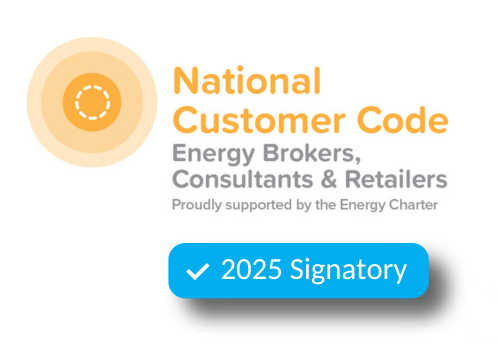
Power factor measures how efficiently an electrical system uses power. It is the ratio of Active Power, (the electricity that actually does work) measured in kilowatts or kW and Apparent Power, (the total power supplied to the system, measured in kilovolt-amperes or kVA). Simply put, power factor tells us how effectively your business uses the electricity it receives. It is expressed as a value between 0 and 1; a higher power factor (closer to 1) means greater efficiency.
In this article, we look deeper into why power factor matters to your business and how you can improve it to reduce waste and save money.
Why is power factor important?
Understanding how power factor is calculated allows users to assess whether their system is not wasting the electrical power it consumes. A high power factor means your business uses electricity efficiently, while a low power factor indicates wastage. This inefficiency results in increased costs, as many businesses are now charged based on Apparent Power (kVA) rather than just Active Power (kW).
For example, let’s say your business operates with an Apparent Power of 100 kVA and a power factor of 0.8. This means that your actual usage is only 80 kW (100 x 0.8 = 80), yet you are billed for the full kVA. If you improve your power factor to 0.95, your actual usage will increase to 95 kW (100 x 0.95 = 95), reducing your wasted energy and overall costs.
Most electricity suppliers charge businesses on the basis of the total power supplied (kVA). So improving your power factor ensures that more of the electricity you pay for is actually used rather than wasted.

The beer analogy
A fun and perhaps easier way to visualise power factor is to compare it to a nice, cold glass of beer.
The glass represents Apparent Power (kVA) – the total electricity supplied to your system.
The actual beer is Active Power (kW) – the actual usable energy.
The foam on top represents Reactive Power (kVAR) – the wasted energy that doesn’t contribute to useful work.
And of course, you would prefer a full glass of beer with minimal foam. It’s the same with electricity. You want your power factor to be as high as possible. The less reactive power (foam), the more efficient your system is, and the less you pay for wasted energy.
How to improve the power factor?
You can improve power factor by installing power factor correction equipment such as capacitors or other reactive devices. These devices can store excess electrical energy and release it back into the system when needed. This reduces the amount of wasted power and increases efficiency.
The benefits of power factor correction
Improving your power factor comes with several advantages:
There are also several advantages to improving power factor such as:
- Lower electricity costs by reducing kVA demand charges
- Smaller electrical equipment requirements since less power is wasted
- Improving the reliability and lifespan of the equipment by reducing strain on the system
- Reducing carbon footprint through more efficient energy use.
Is Power Factor Correction right for your business?
If your electricity invoice includes a kVA charge under “Network Charges,” you may benefit from power factor correction. At Leading Edge Energy, we can assess your current power factor and recommend the right correction equipment to help you lower costs and improve efficiency.
Get Started Today
Power factor correction is often overlooked as an opportunity for cost savings with a clear return on investment. If you want to explore your options, simply complete this letter of authority form and provide a recent invoice for evaluation. Our team of experts will determine the best solution for your business.
Don’t let inefficient energy use drive up your costs.
Contact us today to start optimising your power factor and reducing energy wastage.
We source, analyse, compare and rank commercial, industrial and multisite energy quotes. Obligation Free.
Chat with one of our experienced consultants today and get the insights your business needs to help manage the risks associated with volatile electricity and natural gas markets. Our energy procurement service is obligation-free and provides a time-saving way of securing lower energy rates from our panel of energy retailers.

Get advice from our Energy Management Consultants

Krystle Will
Energy Management Consultant
Get in Touch
Feel free to call or e-mail us. Or just fill in the form below and we’ll contact you for an obligation-free discussion.
Are you ready to save on business energy costs?
Get Started
Leading Edge Energy is proud to be a signatory of the National Customer Code for Energy Brokers, Consultants and Retailers.